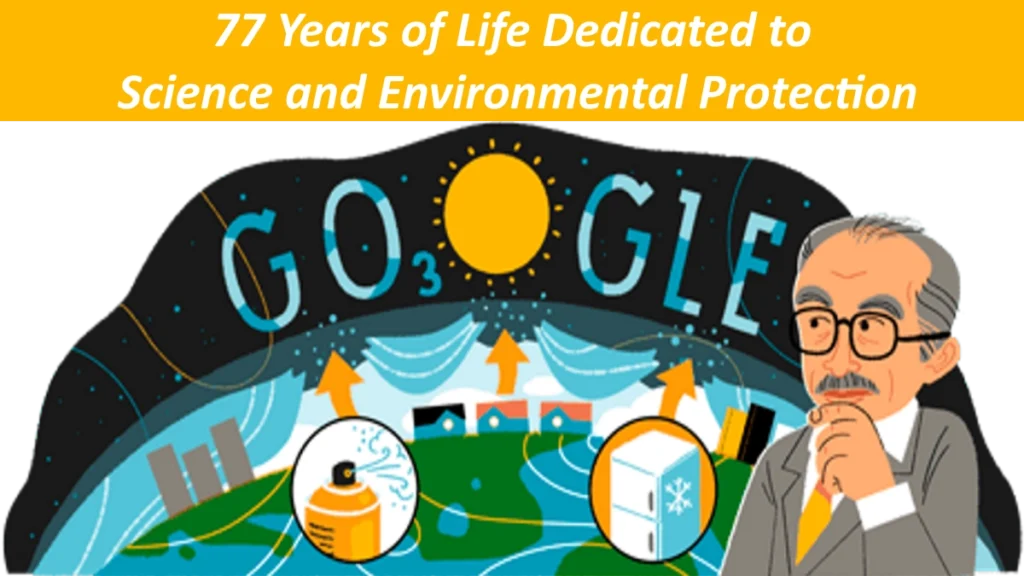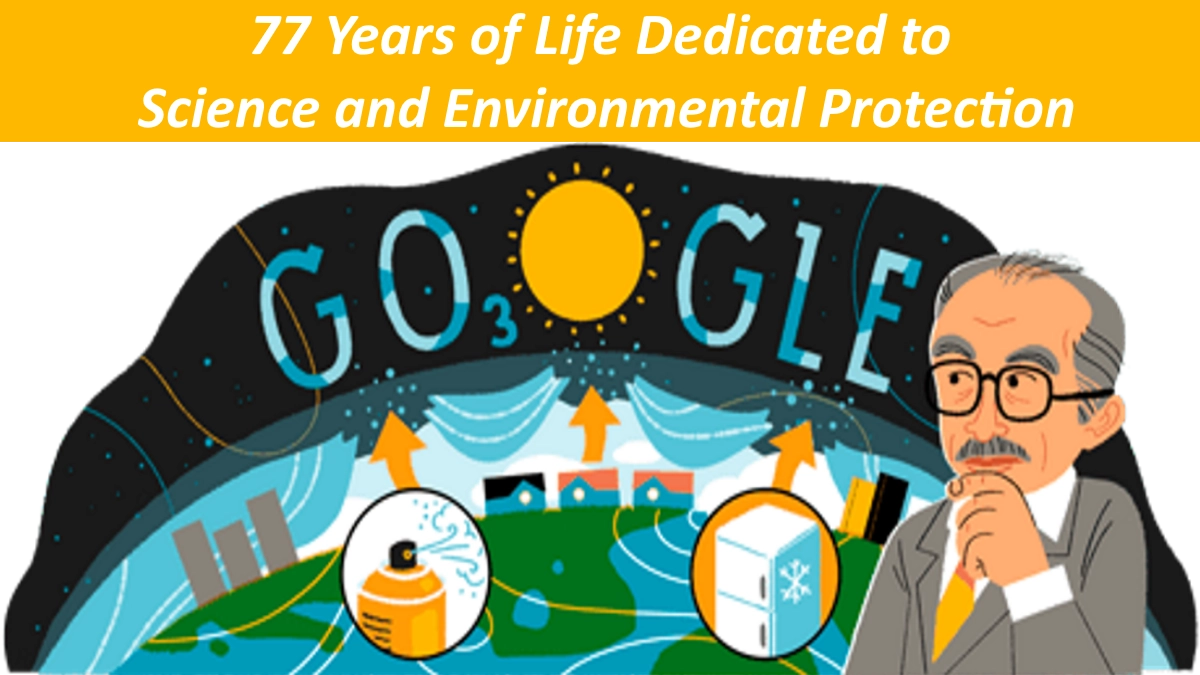Mario Molina was a Mexican-American chemist and environmental scientist who made significant contributions to our understanding of the Earth’s atmosphere and the impact of human activity on it. Throughout his life, he was a dedicated researcher, teacher, and advocate for environmental protection. In this article, we will explore Molina’s life and legacy, his contributions to chemistry, his childhood, education, and family, and his impact on the world.

Table of Contents
Mario Molina Childhood – Early Life and Education
Where was Mario Molina born : Mario Molina was born on March 19, 1943, in Mexico City. From an early age, he showed an interest in the natural world and spent much of his childhood exploring the parks and forests near his home. He attended the National Autonomous University of Mexico (UNAM), where he earned a Bachelor’s degree in Chemical Engineering. Molina then moved to the United States to pursue his graduate studies and earned a Ph.D. in Physical Chemistry from the University of California, Berkeley.
Mario Molina family – Family and Personal Life
Molina was born to Roberto Molina Pasquel, a lawyer, and Leonor Henríquez de Molina, a homemaker. He was the youngest of four siblings. In 1966, Molina married his wife, Luisa Tan Molina, who was also a scientist. The couple had two children together, a son and a daughter. Molina was known for his love of music and often played the piano to relax after a long day of work.
Mario Molina parents
Mario Molina’s parents played an important role in his life and career as a scientist.
Mario José Molina Henríquez, his father, was a successful lawyer and judge in Mexico City. He instilled in his son a strong work ethic and a commitment to social justice. Mario’s mother, Leonor Henríquez de Molina, was a homemaker who encouraged her children’s curiosity and love of learning.
Growing up, Molina was exposed to a wide range of interests, including music, art, and science. His parents supported his intellectual curiosity and provided him with opportunities to explore his interests.
Molina’s parents also valued education and encouraged their children to pursue higher education. Molina attended the National Autonomous University of Mexico (UNAM), where he earned his bachelor’s degree in chemical engineering. Later, he went on to earn his Ph.D. in physical chemistry at the University of California, Berkeley.
Molina’s parents’ emphasis on education and their support of his interests helped to shape his career path as a scientist. His groundbreaking research on the role of chlorofluorocarbons (CFCs) in ozone depletion and his advocacy for environmental protection and sustainability were inspired by the values and lessons he learned from his parents.
Mario Molina nationality
Mario Molina was a Mexican-American chemist and environmental scientist.
Born in Mexico City in 1943, Molina was raised in a family that valued education and social justice. He earned his bachelor’s degree in chemical engineering from the National Autonomous University of Mexico (UNAM) before moving to the United States to pursue his graduate studies.
Molina obtained his Ph.D. in physical chemistry from the University of California, Berkeley in 1972, and he subsequently began his career as a research scientist. He worked at several prestigious institutions, including the Jet Propulsion Laboratory and the Massachusetts Institute of Technology (MIT).
Molina is best known for his groundbreaking research on the depletion of the ozone layer, which led to the discovery that chlorofluorocarbons (CFCs) were the primary cause of ozone depletion. For this work, he was awarded the Nobel Prize in Chemistry in 1995, becoming the first Mexican citizen to receive the award.
Throughout his career, Molina was a strong advocate for environmental protection and sustainability. He served on several scientific committees and advisory boards, and he was a vocal advocate for policies and regulations that promoted environmental responsibility.
Mario Molina contributions to chemistry
Molina’s research on atmospheric chemistry led to the discovery of the dangerous effects of chlorofluorocarbons (CFCs) on the ozone layer. In the 1970s, he and his colleague F. Sherwood Rowland showed that CFCs, which were widely used in refrigerants and aerosols, were breaking down ozone molecules in the stratosphere. This discovery led to a worldwide ban on the production and use of CFCs and earned Molina and Rowland the Nobel Prize in Chemistry in 1995.
Molina’s contributions to atmospheric chemistry also included research on the formation and chemistry of air pollutants such as nitrogen oxides, sulfur oxides, and volatile organic compounds. He used his expertise to advise policymakers on the need to reduce emissions of these pollutants to improve air quality and protect public health.
What is Mario Molina famous for
Mario Molina is famous for his contributions to atmospheric chemistry and environmental science. He is best known for his groundbreaking research on the depletion of the ozone layer and his discovery that chlorofluorocarbons (CFCs) were the primary cause of this phenomenon.
Molina’s research, conducted in the 1970s and 1980s, helped to raise awareness about the environmental impact of human activities, and it led to the implementation of international agreements and regulations aimed at reducing the use of CFCs and other ozone-depleting substances.
For his work on atmospheric chemistry and ozone depletion, Molina was awarded the Nobel Prize in Chemistry in 1995, along with fellow scientists F. Sherwood Rowland and Paul Crutzen. He was the first Mexican citizen to receive the award, and his achievement brought attention to the importance of science and education in promoting environmental sustainability.
In addition to his research, Molina was a passionate advocate for environmental protection and sustainability. He served on several scientific committees and advisory boards, and he used his expertise to promote policies and regulations that promoted responsible environmental practices.
Molina’s legacy as a scientist and environmental advocate continues to inspire new generations of researchers and policymakers, as they work to address the environmental challenges facing our planet.
How did Mario Molina change the world
Mario Molina’s contributions to the field of atmospheric chemistry have had a profound impact on the world. His research on the depletion of the ozone layer led to the discovery that chlorofluorocarbons (CFCs) were the primary cause of this phenomenon, and this discovery helped to raise awareness about the environmental impact of human activities.
Molina’s research led to the implementation of international agreements and regulations aimed at reducing the use of CFCs and other ozone-depleting substances. The most significant of these agreements was the Montreal Protocol, signed in 1987, which called for a gradual phase-out of CFCs and other ozone-depleting substances. The protocol has been hailed as one of the most successful international agreements in history, and it has played a key role in protecting the ozone layer and reducing the risk of skin cancer, cataracts, and other health problems associated with exposure to ultraviolet radiation.
In addition to his scientific contributions, Molina was also a passionate advocate for environmental protection and sustainability. He used his expertise to promote policies and regulations that promoted responsible environmental practices and he worked tirelessly to raise public awareness about the importance of environmental sustainability. His advocacy helped to inspire a new generation of environmentalists and policymakers, who continue to work towards creating a more sustainable future.
Molina’s legacy continues to inspire scientists, policymakers, and environmental activists around the world. His research and advocacy have helped to protect the environment, promote sustainability, and improve public health, and his contributions to science and society will be remembered for generations to come.
Mario Molina Nobel Prize
When did Mario Molina won the Nobel Prize : In 1995, Mario Molina was awarded the Nobel Prize in Chemistry, along with Paul Crutzen and Sherwood Rowland, for their groundbreaking work on the depletion of the ozone layer. Molina and his colleagues were the first to demonstrate that CFCs and other ozone-depleting substances were causing significant harm to the ozone layer, which protects the Earth from harmful ultraviolet radiation.
Molina’s research was a critical turning point in the effort to raise awareness about the environmental impact of human activities and to spur international action to protect the ozone layer. The Nobel Committee praised Molina’s work as “a splendid example of how science can serve society,” and noted that his research had “led to measures to protect the ozone layer, which are now showing effect.”
Molina’s Nobel Prize was not only a recognition of his groundbreaking research, but also a testament to his lifelong commitment to scientific inquiry and social responsibility. He used his platform as a Nobel laureate to advocate for policies and regulations that promoted environmental protection and sustainability, and he continued to conduct research and educate the public about the importance of preserving the Earth’s natural resources.
Molina’s Nobel Prize is a testament to the power of science to drive social change and to the importance of using scientific knowledge to promote a better world. His contributions to the field of atmospheric chemistry and his lifelong commitment to environmental sustainability serve as an inspiration to scientists and policymakers around the world.
Mario Molina awards
In addition to the Nobel Prize in Chemistry, Mario Molina received numerous other awards and honors throughout his career for his pioneering work in atmospheric chemistry and environmental protection.
In 1983, Molina was awarded the NASA Exceptional Scientific Achievement Medal for his work on the ozone layer. He was also awarded the American Chemical Society Award for Creative Advances in Environmental Science and Technology in 1990.
In 1998, Molina was awarded the Presidential Medal of Freedom, the highest civilian honor in the United States, by President Bill Clinton. The award recognized Molina’s contributions to science and environmental protection, and praised him as a “scientist with a conscience” who had “made the world a better, safer place.”
Molina was also awarded the Tyler Prize for Environmental Achievement in 2003, and the Prince of Asturias Award for Technical and Scientific Research in 2004. He was a member of the National Academy of Sciences, the American Academy of Arts and Sciences, and the Pontifical Academy of Sciences, among many other prestigious organizations.
Molina’s numerous awards and honors are a testament to his outstanding contributions to science and environmental protection, and a recognition of his tireless efforts to use his scientific expertise to promote a better world.
Mario Molina death
When did Mario Molina die: Mario Molina passed away on October 7, 2020, at the age of 77. The cause of his death was not immediately disclosed.
Molina’s death was mourned by scientists and environmental activists around the world, who praised him as a visionary scientist and a passionate advocate for the environment. In a statement, the Mario Molina Center for Strategic Studies on Energy and the Environment, which Molina founded in Mexico, described him as “a visionary scientist, an exceptional human being, and a tireless advocate for a healthier planet and a more just world.”
Molina’s legacy continues to inspire new generations of scientists and environmentalists to work towards a more sustainable and equitable future for all.
Also Read Inside the Life of Tiger Lily: Michael Hutchence’s Daughter Today 2023
Conclusion
Mario Molina was a pioneering scientist whose work revolutionized our understanding of the Earth’s atmosphere and the impacts of human activity on the environment. His discovery of the role of chlorofluorocarbons (CFCs) in ozone depletion earned him a Nobel Prize and helped to inspire global action to protect the ozone layer.
Molina’s research also shed light on the complex chemistry of the Earth’s atmosphere and the impacts of air pollution on human health and the environment. His tireless advocacy for environmental protection and sustainability helped to raise awareness about the urgent need to address climate change and other environmental challenges.
Molina’s legacy continues to inspire scientists, policymakers, and advocates around the world to work towards a more sustainable future. His commitment to scientific discovery, environmental protection, and mentorship will be remembered for generations to come.
Don’t forget to support us by following us on Google News or Returning to the home page TopicsTalk
Join Telegram and WhatsApp for More updates
Follow us on social media




